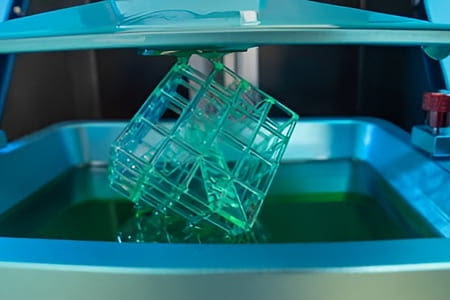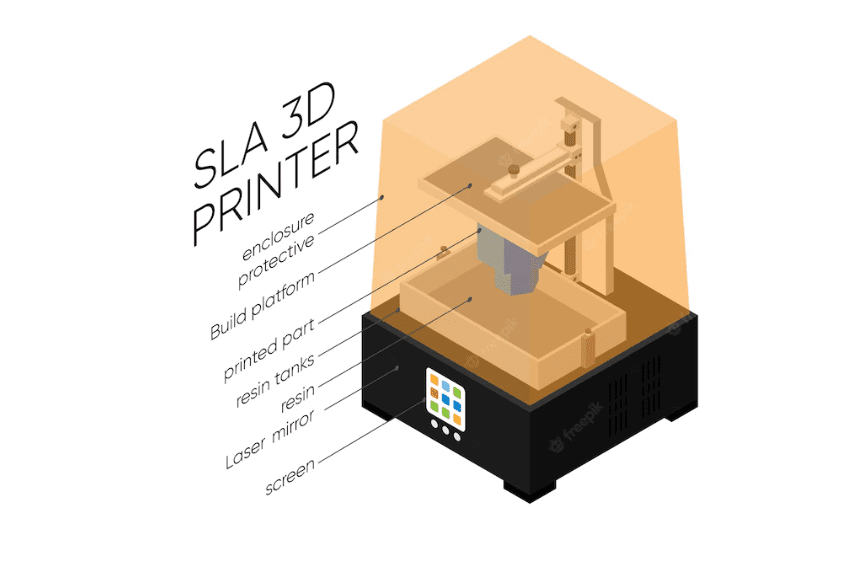
What is stereolithography?
In today's post we will talk about stereolithography, one of the first 3D solutions that was created, and which is still today one of the most widely used printing technologies.
Also known by the acronym SLA or liquid resin 3D printing, stereolithography is the manufacturing of 3D models using UV-sensitive resins. This technology allows high precision prototypes to be achieved, with impeccable features and fine finishes, in a short amount of time.
Here, we will explain all the details of this 3D printing technology.
Also known by the acronym SLA or liquid resin 3D printing, stereolithography is the manufacturing of 3D models using UV-sensitive resins. This technology allows high precision prototypes to be achieved, with impeccable features and fine finishes, in a short amount of time.
Here, we will explain all the details of this 3D printing technology.
How does stereolithography 3D printers work?
As with all 3D printing technologies, the first step is to digitally design the prototype that will be built and send it to the printer for it to start creating the model layer by layer. For SLA printing, UV-sensitive resins are used, i.e. a material that solidifies when exposed to the UV laser.
The printer consists of a moving platform that lowers into the resin tray and leaves only the thickness of one layer of print.
The UV laser then directs the beams to the bottom of the resin tank, drawing the object on the surface of the liquid.
Meanwhile, this material hardens when exposed to ultraviolet light.Each time a layer is completed, we remove the printed prototype from the bottom of the tank so that the resin can flow again, and the process can be repeated. In this way, layers are added consecutively until printing is completed.
The printer consists of a moving platform that lowers into the resin tray and leaves only the thickness of one layer of print.
The UV laser then directs the beams to the bottom of the resin tank, drawing the object on the surface of the liquid.
Meanwhile, this material hardens when exposed to ultraviolet light.Each time a layer is completed, we remove the printed prototype from the bottom of the tank so that the resin can flow again, and the process can be repeated. In this way, layers are added consecutively until printing is completed.

Characteristics of SLA printing
• Models can be built with a high level of detail and accuracy, as well as having very complex designs.
• The parts have smooth surfaces and excellent finishes.
• It allows a wide range of manufacturing materials to be used.
• Fast turnaround times
• The parts have smooth surfaces and excellent finishes.
• It allows a wide range of manufacturing materials to be used.
• Fast turnaround times
Aplications of SLA printing
Stereolithography printing technology is one of the most widely used technologies because of its multiple applications. It can be used to create prototypes for different industrial sectors, for engineering, healthcare, jewellery or product designers, to name but a few options.
Prototypes created with stereolithography 3D printers have qualities that allow them to be machined in most cases. This extends their applications to more areas.
If you are interested in this type of 3D printing for your project, don't hesitate to get in touch!
Prototypes created with stereolithography 3D printers have qualities that allow them to be machined in most cases. This extends their applications to more areas.
If you are interested in this type of 3D printing for your project, don't hesitate to get in touch!







